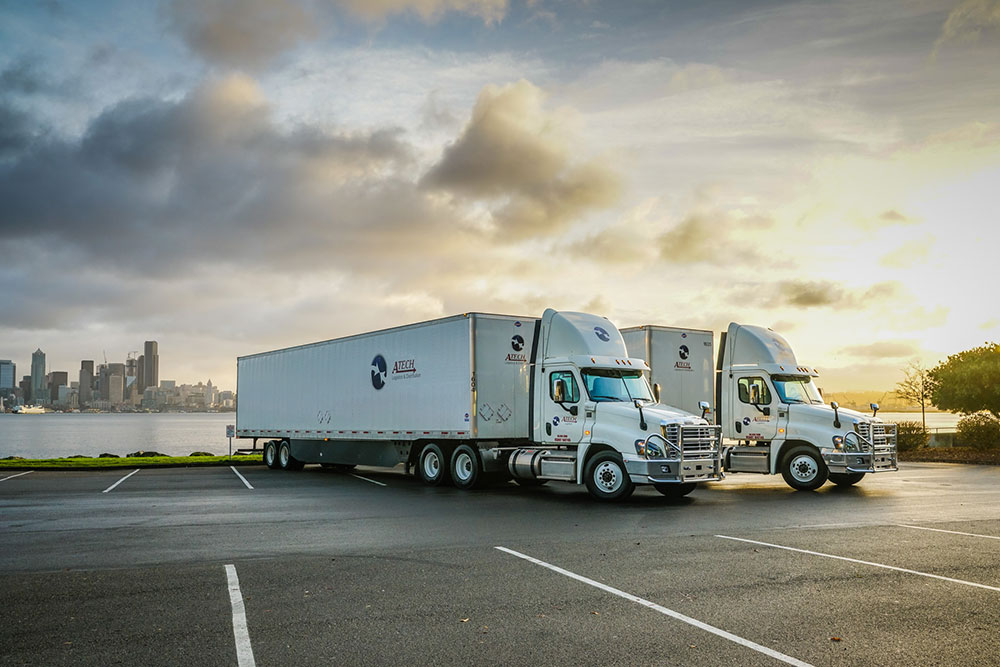 Over the last 18 months, few industries have not felt a shock from the COVID-19 pandemic. Regardless of location or industry, the whole world is in this together. So it comes as no surprise that the logistics and transportation industry has seen its fair share of challenges.
Over the last 18 months, few industries have not felt a shock from the COVID-19 pandemic. Regardless of location or industry, the whole world is in this together. So it comes as no surprise that the logistics and transportation industry has seen its fair share of challenges.
From layoffs to businesses shutting down and higher demand in delivered goods, most companies have been forced to get creative to keep their doors open and their employees taken care of. So how has logistics and transportation fared during the pandemic?
1. Supply Chain Disruptions
When the virus first appeared in China, the logistics industry nearly immediately began to feel an impact. With China in quarantine, manufacturers halted production, which resulted in international bottlenecks.
At the beginning of the pandemic, both imports and exports to and from China saw a decline. Everything from agriculture to manufactured goods was impacted, with a steep 10% decline in ocean freight shipments at Chinese ports just in the first quarter of 2020.
As the pandemic spread globally, exporting countries like India, Brazil, China, and Mexico began to feel the brunt of the pandemic. Many factories needed to close or decrease the number of employees working on the floors. With exporting countries like these reducing production on goods, large importing countries, like those in the European Union, began to feel the effects of goods and supplies not arriving.
2. Challenges Keeping Up With Demand
As ports worldwide increased restrictions, air freight became a resource only for governmental necessities. So air freight saw a decrease in goods volume, resulting in higher shipping costs. With restrictions on air and sea transportation, land transportation saw an increase in demand.
The trucking industry suddenly became the go-to method of shipping goods. However, the industry wasn’t ready for such an increase in demand, and struggled to keep up. As a result, trucking companies found themselves with a shortage of drivers, chassis, and trucks—not to mention an increase in demand for goods delivery. These combined to make it challenging for shipping times to stay on schedule.
With the surge in demand and supplies of certain goods remaining low, many smaller trucking companies struggled. Some were even forced to close.
3. Small Businesses Struggling
Though it’s easy to see that the COVID-19 pandemic has impacted the trucking and logistics industry in many ways, it’s difficult to know how long we will feel the effects. At the beginning of the pandemic, the International Monetary Fund (IMF) predicted a 3% contraction in the logistics and transportation industry.
Now that we’re well into 2021, some parts of the world are returning to normal. Even with the global distribution of the COVID-19 vaccine and travel and social distancing restrictions being lifted, many economists are still predicting a recession in the coming months.
Despite the slow return to normalcy, many small businesses will be unable to recover from the pandemic. Due to small logistics businesses worldwide not being prepared for a disaster of this magnitude, they simply did not have a backup or recovery plan in place. This challenge could open the logistics space for new businesses or existing companies to fill the demand.
The negative impact of COVID-19 doesn’t just sit with the smaller industry businesses. Larger companies, like DHL, declared force majeure in April 2020. This altered many large contracts by claiming ‘acts of God.’ While larger businesses can more readily absorb dips in the market, the full effects created by the pandemic likely won’t be known until COVID-19 is under control globally.
4. Companies Forced to Adapt
Most logistics companies have implemented new protocols and systems to ensure the safety of their workers.
Many logistics companies now provide employees with protective gear like masks and face shields to help prevent mass outbreaks of COVID-19 in warehouses. Most warehouses and offices adhere to social distancing guidelines, disinfect work areas more frequently, and give employees unlimited paid time off.
Companies are getting creative with how they ship goods. With roughly 60% of air freight between China and Europe disappearing, charter planes have been hired to ship goods. Some experts believe there will be a boom for the rail freight industry between Asia and Europe in the coming years.
More companies are turning to technology to help keep up with supply while keeping their employees safe. Some companies are experimenting with automated transportation, like drones, while others are testing robots to help with warehouse work.
5. Learning Lessons From the Pandemic
As the world recovers from COVID-19, so will the logistics and transportation industry. However, some valuable lessons have been learned throughout the pandemic.
Moving forward, governments will likely place stricter regulations on what goes in and out of their countries, making shipment of goods harder. As these safety measures are globally implemented, the cost of shipping is likely to increase.
Supply chains will begin to become more automated to accommodate unforeseen bottlenecks and help prevent delays in shipping. By ensuring that data silos don’t exist in the supply chain, the logistics industry will be more prepared when global crises arise.
The push toward more automation in the logistics and transportation industry will reach its peak. Currently, roughly 80% of logistics companies are not using the most current technology in their daily operations. As safety concerns continue and demand for instant shipping becomes an expectation, automation and more digitization will also increase.
While the COVID-19 pandemic created many challenges for all industries, the logistics and transportation industry is rising to the challenge. Even with the steep learning curve, logistics companies managed to keep food on millions of tables and meet the ever-growing demands of their customers.
Though the past 18 months have tested the patience, innovation, and emotions of industry leaders, the logistics industry has proven that it will continue to thrive—even in the most unpredictable markets.


Leave a Reply